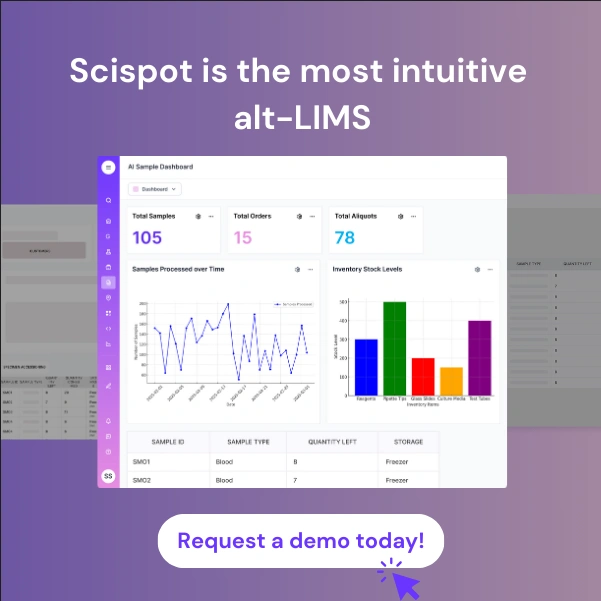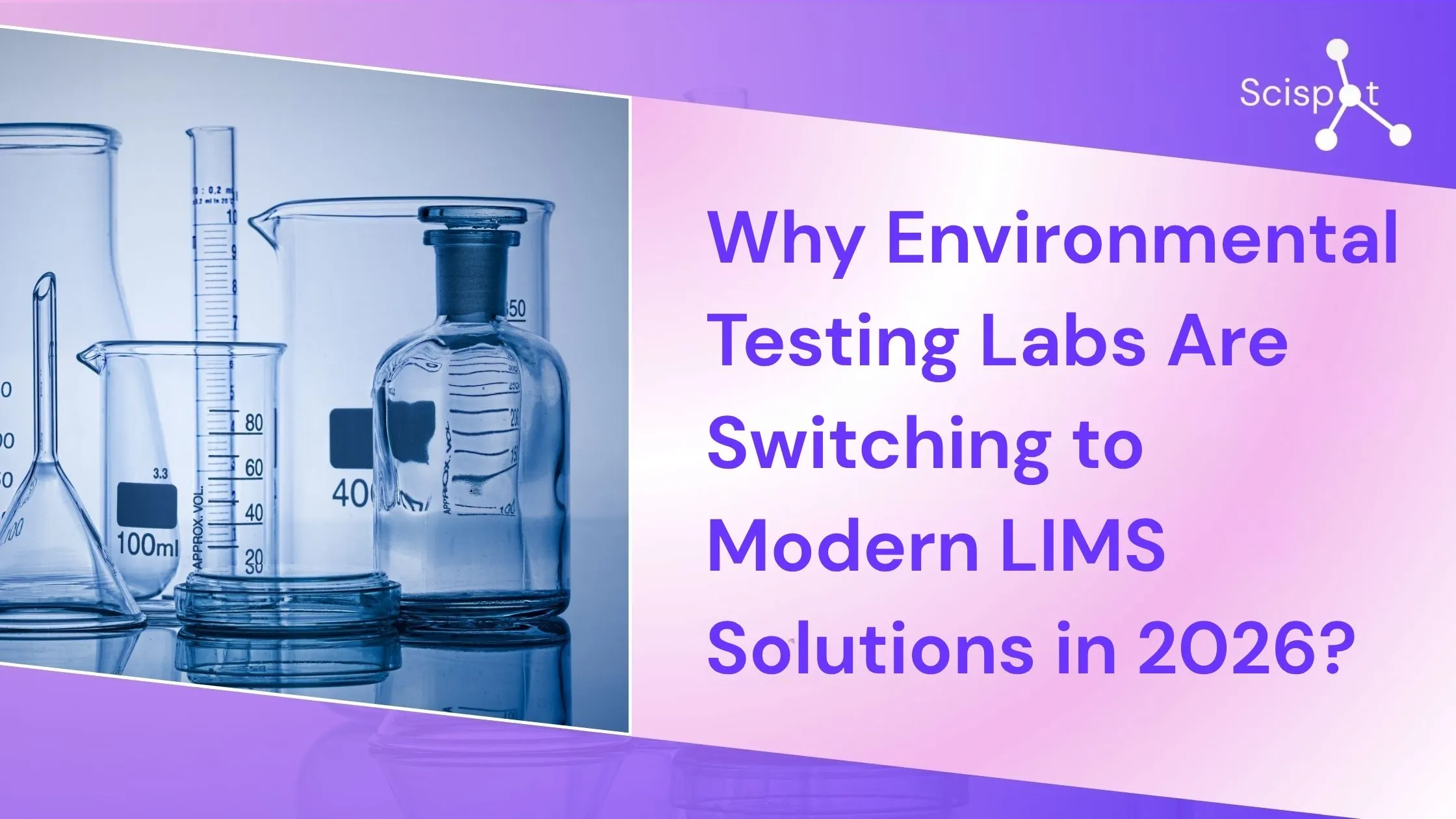Environmental and water testing laboratories worldwide face a critical challenge that's costing them time, money, and competitive advantage. Their outdated Laboratory Information Management Systems (LIMS) have become operational bottlenecks, creating inefficiencies that ripple through every aspect of their work.
The problem isn't just technical. It's strategic. While competitors embrace modern LIMS solutions that deploy rapidly and adapt quickly, labs stuck with legacy systems find themselves spending weeks on simple configuration changes that should take hours.

The Hidden Cost of Legacy Laboratory Systems
Traditional LIMS platforms served their purpose well for decades, but today's regulatory environment demands something entirely different. These systems, built through extensive customization over years, now create more problems than they solve.
Consider the daily reality in most labs. Staff members navigate clunky interfaces that slow down routine tasks. Simple sample tracking becomes a multi-step process requiring specialized knowledge. When regulatory requirements change, labs face months of expensive customization work just to maintain compliance.
The learning curve for new employees has become steep and costly. Training periods stretch longer as staff struggle with outdated user interfaces designed for a different era of computing. Meanwhile, lab management software that prioritizes intuitive design sits unused because decision-makers fear the transition process.
Modern laboratories need systems that work with their existing processes, not against them. The industry shift toward agile operations requires platforms that can adapt quickly to new testing protocols without requiring extensive IT intervention.
Why Out-of-the-Box Solutions Are Winning
The most successful laboratory transformations we've seen involve a fundamental shift in thinking. Instead of trying to force legacy systems to work harder, forward-thinking labs are embracing out-of-the-box LIMS solutions that minimize customization needs from day one.
These modern platforms incorporate low-code and no-code configuration options that empower end users to make changes themselves. Laboratory managers can adjust workflows, modify data collection forms, and update compliance protocols without submitting IT tickets or waiting for external consultants.
The speed advantage is remarkable. Where legacy implementations might take 6-12 months, modern solutions like those offered by Scispot's alt-LIMS platform can be configured and deployed in weeks. This rapid deployment capability means labs can respond dynamically to changing regulatory requirements or new testing demands.
Consider how this impacts operations during audits. Modern systems provide built-in audit trails and documentation that automatically capture every action. Instead of scrambling to compile compliance reports, labs can generate comprehensive documentation at the click of a button.

Solving the Data Management Challenge
One of the most persistent problems in laboratory operations involves managing data across multiple disconnected systems. Many labs operate with one platform handling core LIMS functions while another manages reporting, creating manual handoffs that introduce errors and delays.
Laboratory data management becomes exponentially more complex when systems don't communicate effectively. Spreadsheets proliferate as workarounds, creating data integrity risks and making it difficult to maintain proper traceability.
Advanced database technologies are changing this landscape completely. Graph databases, for example, can reveal hidden relationships in sample data that traditional relational databases miss entirely. This enhanced connectivity enables laboratories to uncover trends and patterns that drive better decision-making.
Scispot's Labsheets technology exemplifies this approach by centralizing data management while maintaining the flexibility laboratories need for diverse testing protocols. When instruments, applications, and reporting systems all connect through a unified platform, manual errors decrease significantly while productivity increases.
Quality Control and Compliance Made Simple
Quality control represents the foundation of reliable laboratory operations, yet many legacy systems treat it as an afterthought. Modern lab management software builds quality control directly into every workflow, creating proactive systems that prevent problems rather than simply documenting them after they occur.
Smart alert systems provide immediate notifications when test results fall outside predefined parameters. These alerts create continuous feedback loops that help laboratory staff address issues before they escalate into larger problems. The result is higher data quality and reduced risk of compliance violations.
Regulatory compliance becomes manageable when systems are designed with audit readiness in mind. Instead of preparing for audits through intensive document gathering exercises, laboratories with modern systems maintain continuous compliance through automated documentation and traceability features.
The integration of compliance features with daily workflows means staff members don't need to think about compliance separately. It becomes a natural part of their routine work, reducing the risk of oversights that could lead to regulatory issues.

Implementation Strategies That Actually Work
The transition from legacy to modern systems represents one of the most significant operational changes laboratories can undertake. Success requires more than just technical implementation; it demands careful change management and user adoption strategies.
The most effective approaches combine remote and on-site support to ensure smooth transitions. This hybrid support model allows laboratories to maintain operations while gradually shifting to new processes. Staff members receive hands-on training with immediate access to expert assistance when questions arise.
Pilot programs have proven particularly valuable for evaluating system capabilities before full-scale deployment. Scispot offers trial programs that allow laboratories to test functionality with their actual data and workflows, reducing implementation risk significantly.
Comprehensive training programs ensure that entire teams can harness new system capabilities effectively. When training is integrated with detailed documentation and ongoing support, user adoption accelerates and resistance to change decreases.
Making the Strategic Decision
Laboratory leaders considering this transition should focus on systems that offer integrated quality control, robust compliance tools, and strong connectivity with existing instruments and applications. The goal isn't just to replace old software; it's to create a foundation for long-term operational excellence.
Modern solutions should reduce dependence on IT resources while increasing operational flexibility. When laboratory staff can configure their own workflows and reports, organizations become more responsive to changing requirements and new opportunities.
The investment in modern laboratory data management systems pays dividends through improved efficiency, reduced compliance risk, and enhanced data quality. More importantly, it positions laboratories to take advantage of emerging technologies like artificial intelligence and machine learning that require well-structured, accessible data.
Labs that delay this transition risk falling further behind as regulatory requirements become more complex and competitive pressures increase. The organizations that embrace modern solutions now will be better positioned to thrive in an increasingly demanding operational environment.
Ready to modernize your lab operations? See how Scispot's integrated lab management platform can transform your workflows, enhance compliance, and boost productivity. Book a free consultation to discover which solutions fit your specific needs.
.gif)





.webp)
.webp)
.webp)



